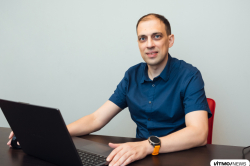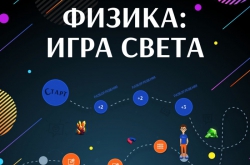Faculty's own brand of education
The Faculty of Physics and Engineering works under the auspices of the International Research Center for Nanophotonics and Metamaterials headed by renowned Professor Pavel Belov. The center houses five international laboratories: the Laboratory of Applied Radiophysics, the Laboratory of Nano-Optomechanics, the Laboratory of Light-matter Coupling in Nanostructures, the Laboratory of Metamaterials, and the Laboratory of Hybrid Nanophotonics and Optoelectronics.
“We base our work on the three pillars of science, education, and engineering, and we believe that there is no such thing as “local” science, because science is always global”, said Mikhail Petrov, vice-dean of The Faculty of Physics and Engineering.
The Faculty collaborates with the Ioffe Institute. Bachelor’s students study mathematics, theoretical and applied physics, as well as learn how to use software programs necessary for their research.
Teachers also work to involve students in various projects that would help them acquire teamwork skills. For example, freshmen were asked to come up with an idea for how to prevent silt build-up on surfaces that are in constant contact with water. The students decided to use magnetic nanoparticles.
“Studying here has nothing to do with cramming. Many students start working in our laboratories before graduation. Some of them go abroad to work at our partner-universities. And many international students come here as well, so it's not brain drain, it's brain circulation. But, of course, not all our students become scientists; many of them work in the industry, at companies such as LG, Philips, Samsung, Bosch, etc. Apart from studies, our students can take part in various conferences, internships and summer schools”, said Mikhail Petrov.

Young scientists and this year's applicants to the university’s programs also attended the Open Day. They told the applicants about their projects and achievements. Kseniya Baryshnikova, research associate at the Department of Nanophotonics and Metamaterials and winner of the recent RUSNANO Science Slam, told the audience about dark matter, while Maksim Miagkikh, a high-school student from St. Petersburg, presented his research on how nanostructures can increase the efficiency of solar cells.
Science is fun: what is dark matter and what does “fundamental science” mean?
Kseniya Baryshnikova: For many people, “fundamental science” is just a bunch of beautiful words: string theory, galactic bubbles, etc. But it seems that it’s almost impossible to understand. And what’s more, many people believe that there is no need to understand it at all, since it is completely useless. I used to think the same way. When I was only choosing my path in science, I wanted my work to be useful for ordinary people. Back then, I couldn’t even imagine that such things as neutron stars or black holes would interest me, but everything turned out differently and today I want to tell you about dark matter.

What is dark matter? There is no theory that is 100% proven and correct, since dark matter is essentially undetectable, and many theories compete with each other over being the most feasible or beautiful. There is a theory called anapole. And I think it’s the simplest theory of dark matter ever. Imagine a doughnut or a torus. The theory states that most of the matter in the universe may be made out of particles that possess this doughnut-shaped electromagnetic field called an anapole.
But in what way can it be useful? My colleagues once asked me to come up with a model of a smart table that would charge everything on its surface, e.g. computers, phones, light bulbs. The main problem is how to prevent users from being exposed to radiation when sitting in front of such a table. Anapole can be useful here, as it allows us to transmit energy in a way that would be harmless to humans.
How to increase the efficiency of solar cells and do science while being a school student?

Maksim Miagkikh: I came to ITMO as a summer intern, and I liked it here and decided to stay. This entire year I’ve been conducting research on increasing the efficiency of solar cells. Unfortunately, these batteries are very inefficient, as light that passes through the protective cover of the battery panel is reflected and and leaves in a different direction.
What can be done to fix this? We could make the cover transparent, to allow the light to go through it. But it should still reflect light. What material is both reflective and transparent? We can use metamaterials made up of of silicon pyramid-like structures to increase the efficiency of solar cells by 30 %.

George Zograf, a PhD student at ITMO University, also attended the Open Day and described to the applicants his research on silicon particles. You can learn more about his research, in our article about the recent Science Slam in St. Petersburg.



